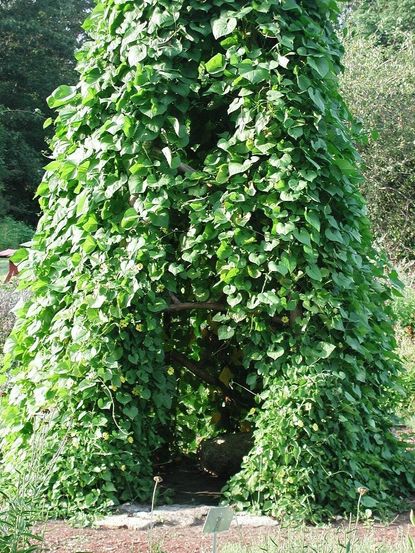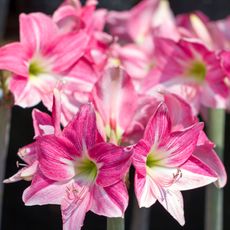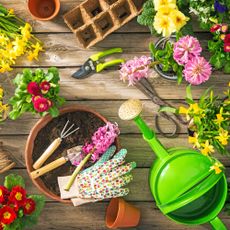Children's Bean Teepee - Instructions For Making A Bean Teepee


Children love to have “secret” places hide or play in. Such enclosed areas can spark many stories in their imagination. You can make such a place for children in your garden with just a little bit of work. The bonus is that you can also get a wonder crop of green beans or pole beans in the process. Let's take a look at how to make a bean teepee.
Steps for Making a Bean Teepee
Growing runner beans on teepees is not a new concept. This space saving idea has been around for centuries. We can apply this space saving technique to making a fun playhouse for kids.
Building the Bean Teepee Frame
To make a children's bean teepee, we need to start by building the teepee frame. You will need six to ten poles and string. The poles for the bean teepee can be made of any material but you do need to keep safety in mind in case the children knock the teepee over. The typical material for making teepees for beans is bamboo poles, but you can also use PVC pipe, thin dowel rods, or hollow aluminum. It is recommended that you avoid heavy materials like solid metal or heavy, thick wood rods. The teepee poles can be whatever length you decide. They should be tall enough so that the child who will be playing in the bean teepee will be able to stand up comfortably in the center. Also take into account the desired diameter of your bean teepee when selecting the size of your poles. There is no set diameter but you want it to be wide enough for the children to be able to move around inside. Your bean pole teepee should be located in a spot that gets at least five hours of full sun. The soil should be rich in organic material. If the soil is poor, mark out the edge of where you will be placing the bean teepee poles and amend the soil on the edge of that circle. Set the poles into the edge of the circle and push them into the ground so that they angle into the center and meet the other poles. Poles should be spaced at least 24 inches (61 cm.) apart but can be placed further apart. The closer you place the poles, the more densely the leaves of the beans will grow. Once the poles are in place, tie the poles together at the top. Simply take string or rope and wrap it around the meeting poles. There is no set way to do this, just tie the poles together so that they cannot come apart or fall down.
Planting the Beans for the Children's Bean Teepee
Choose a bean to plant that likes to climb. Any pole bean or runner bean will work. Do not use bush beans. Scarlet runner beans are a popular choice due to their brilliant red flowers, but a bean with an interesting pod, like a purple pod pole bean, would also be fun. Plant a bean seed on each side of each pole. The bean seed should be planted about 2 inches (5 cm.) deep. If you would like a little extra splash of color, plant every third or fourth pole with a flowering vine such as nasturtium or morning glory.* Water the seeds well. The bean seeds should germinate in about a week. Once the beans are tall enough to be handled, tie them loosely to the bean teepee poles. After this, they should be able to climb on their own. You can also pinch the tops of the bean plants to force them to branch out and grow more densely. Keep the bean plants well watered and be sure to harvest any beans that grow frequently. This will keep the bean plants producing and the bean vines healthy. Learning how to make a bean teepee will help you create this fun project in your own garden. A children's bean teepee is a place where both plants and imaginations can grow. *Note: Morning glory flowers are poisonous and should not be planted on teepees meant for young children.
Gardening tips, videos, info and more delivered right to your inbox!
Sign up for the Gardening Know How newsletter today and receive a free download of our DIY eBook "Bring Your Garden Indoors: 13 DIY Projects For Fall And Winter".

Heather Rhoades founded Gardening Know How in 2007. She holds degrees from Cleveland State University and Northern Kentucky University. She is an avid gardener with a passion for community, and is a recipient of the Master Gardeners of Ohio Lifetime Achievement Award.
-
 Try These 8 Pink Amaryllis Varieties That Look Stunning Indoors And Out
Try These 8 Pink Amaryllis Varieties That Look Stunning Indoors And OutWhile not quite as prevalent as the traditional red flowering type, the pink amaryllis is a beautiful addition to the home – and here are eight of the best
By Bonnie L. Grant
-
 9 Expert Gardening Techniques You Should Master in 2025 To Raise Your Growing Game
9 Expert Gardening Techniques You Should Master in 2025 To Raise Your Growing GameMake a New Year resolution to grow your best-ever plants and master next-level gardening techniques that will turn you into an expert in no time.
By Mary Ellen Ellis